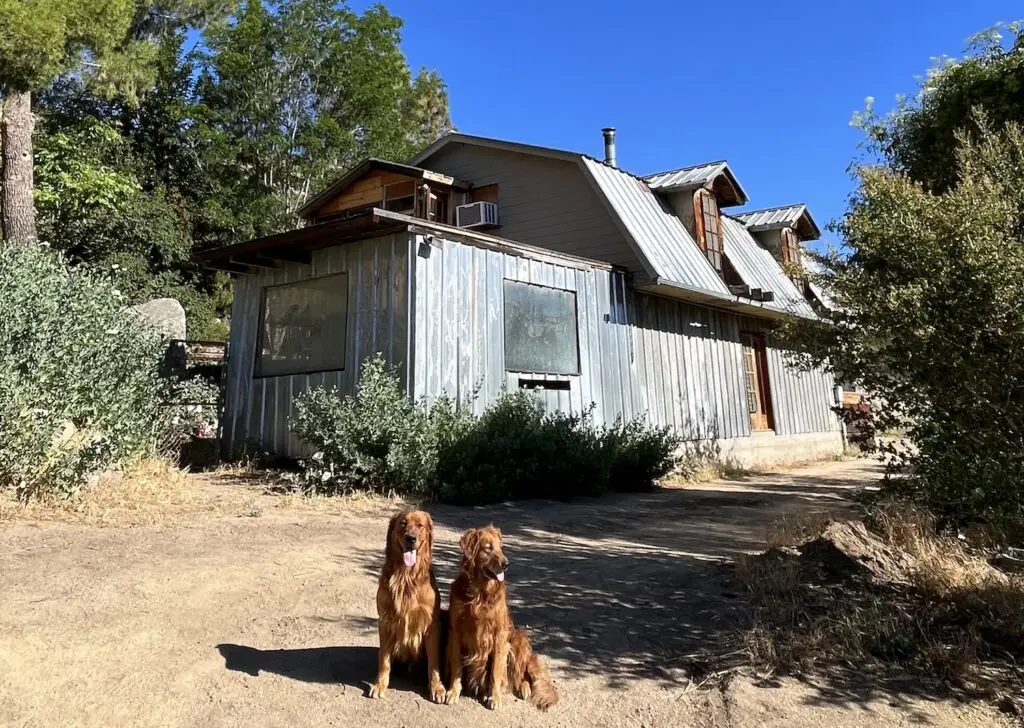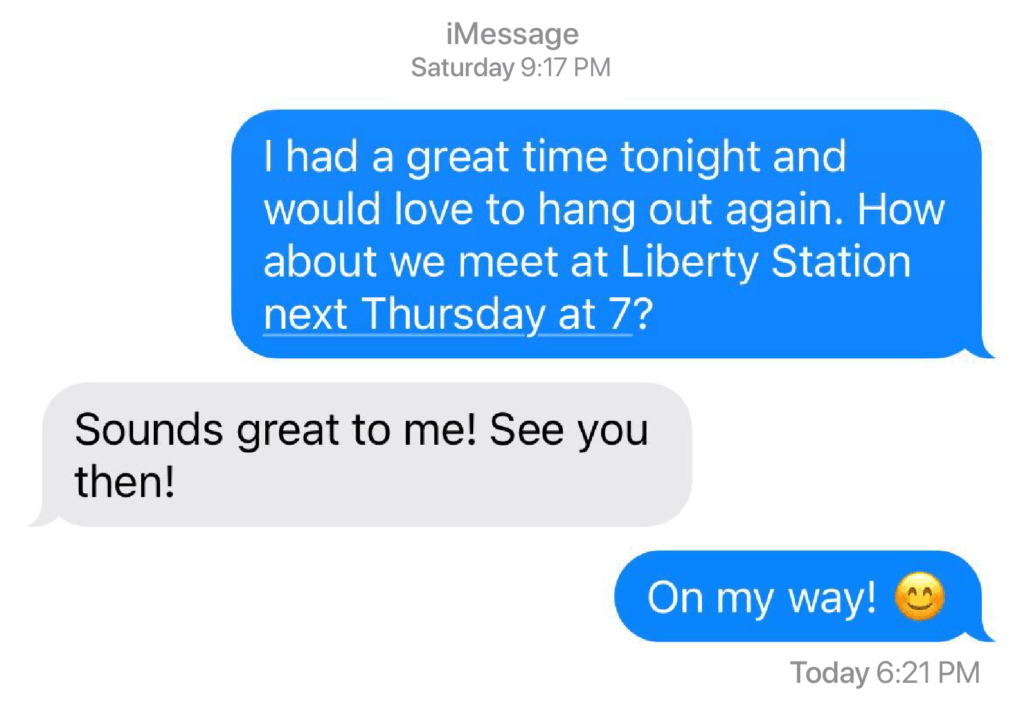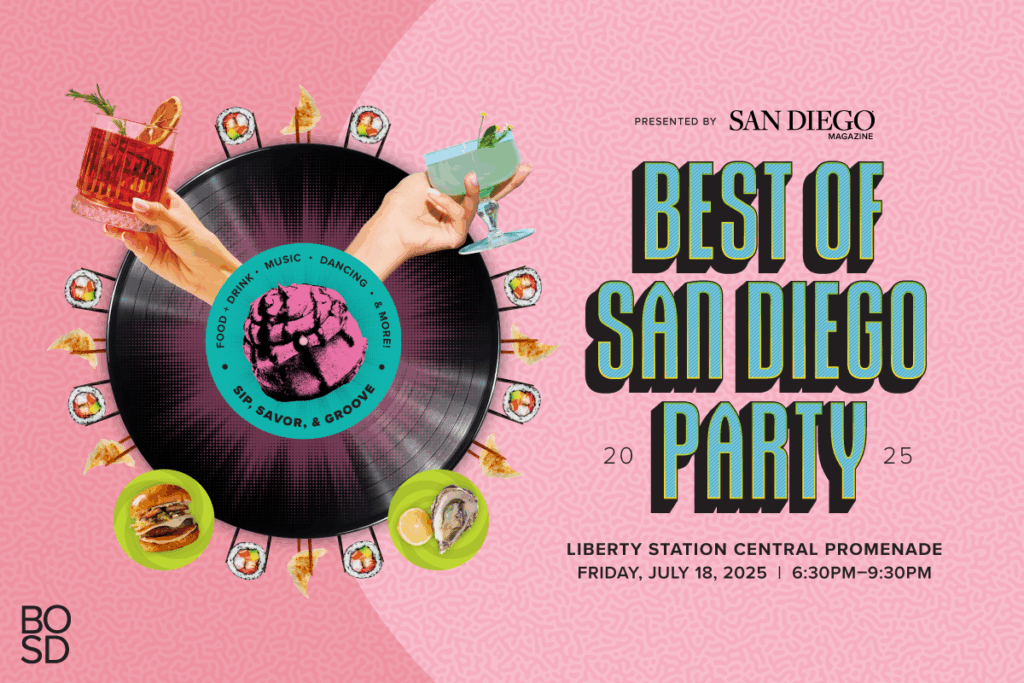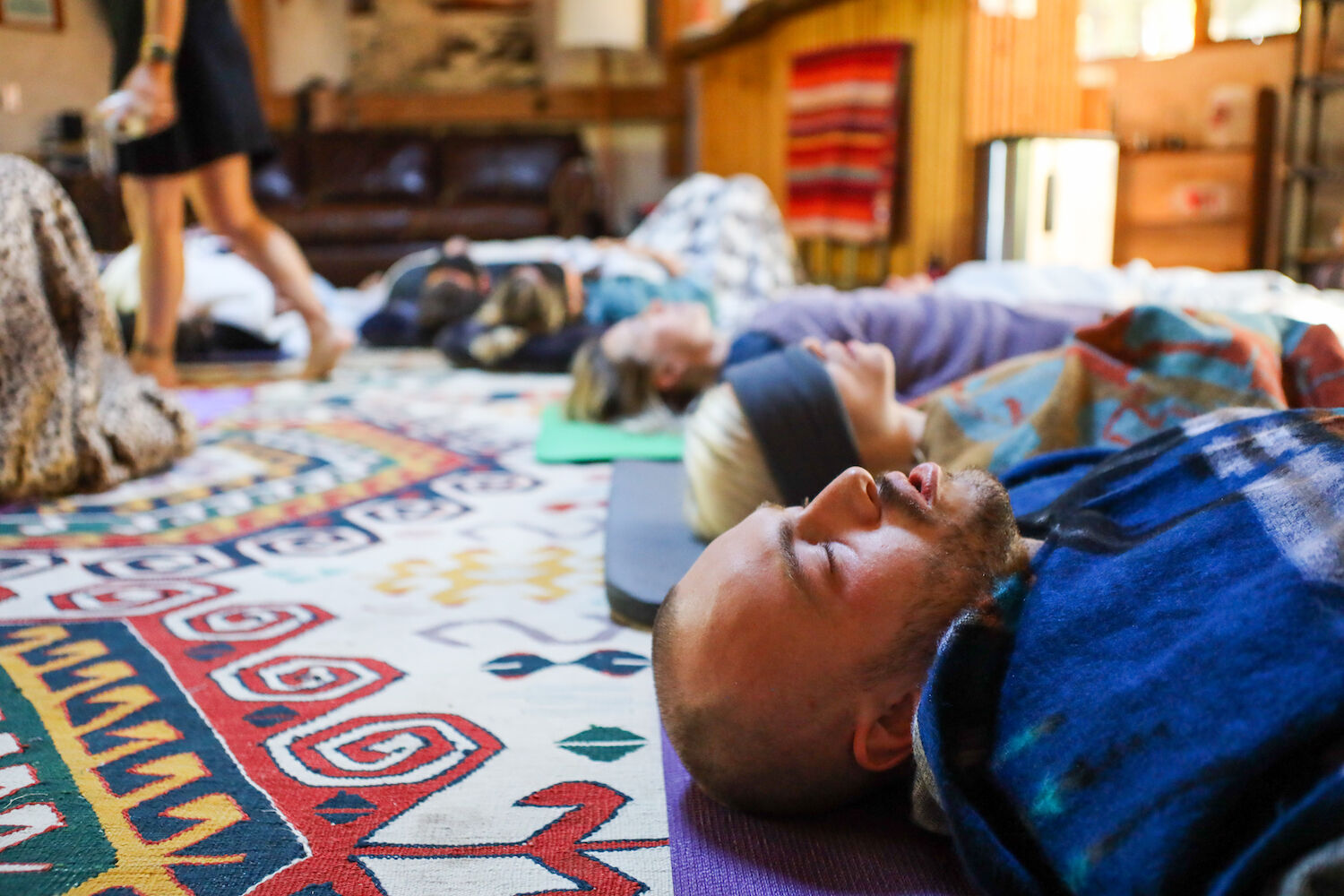
Drug-free healing trips at Holotropic Breathwork San Diego
Leah Lipson
There’s breathing to get through your day, and then there’s breathing to leave your day entirely. At Holotropic Breathwork San Diego, practitioners go through three hour sessions using breathing techniques to enter an altered state of consciousness.
The goal is to get the emotional release or therapeutic benefits some people associate with psychedelic drugs, but without the actual ingesting drugs part, says Lori Camp, a facilitator who’s been practicing the technique for more than 17 years.
“When you’re in the height of feeling your emotions, you’ll become aware of certain feelings that are stuck,” she says. “And when you become aware of them, you can process them by breathing through them.”
Her work is based on the theories of Dr. Stan Grof, a Czech psychiatrist who studied the effects of LSD on the psyche and developed a process to achieve similar results without taking hallucinogens. For the first hour, practitioners do very fast breathing—not quite hyperventilating, but nearly—while listening to very intense music. “Like African tribal drumming,” Camp says.
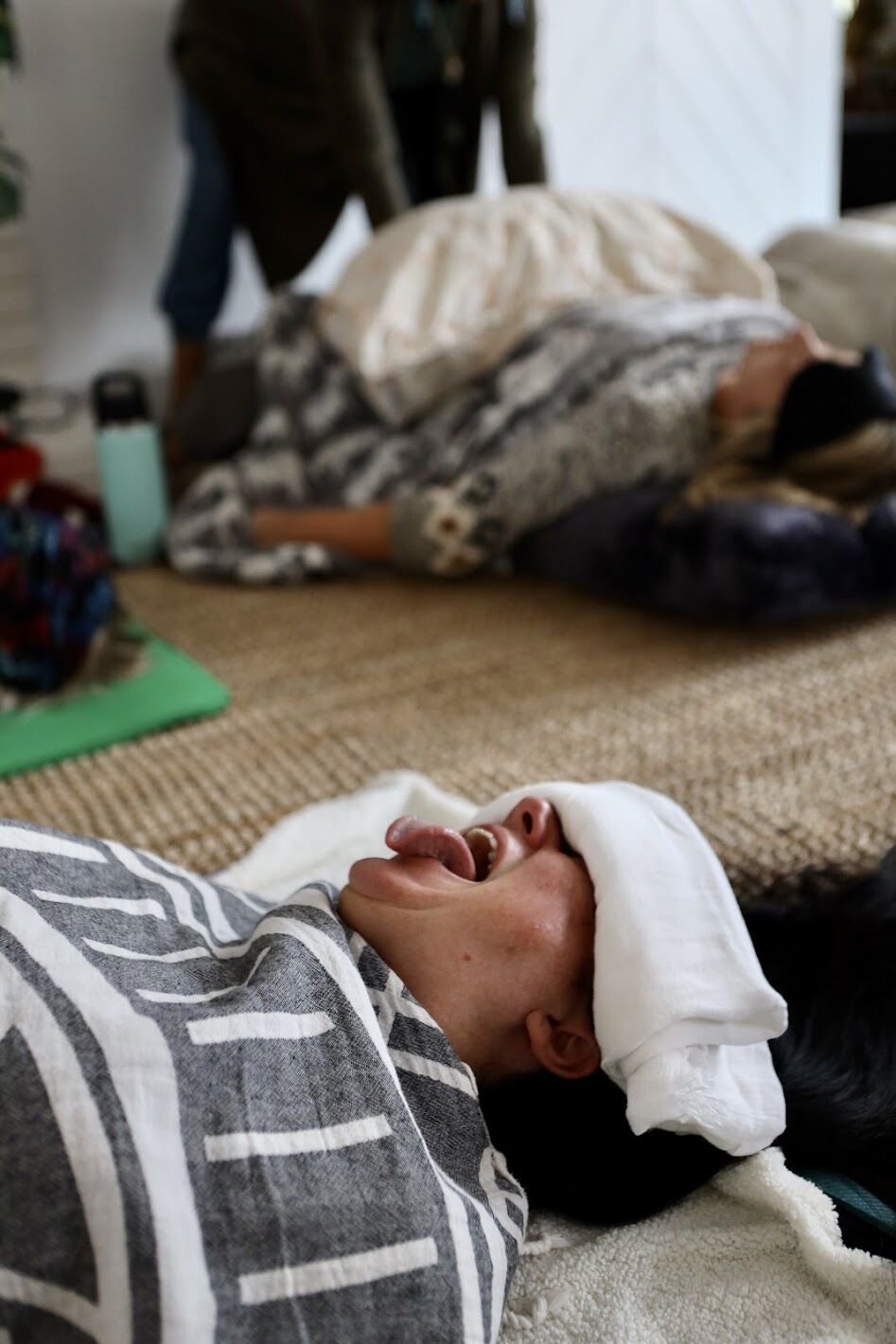
Holotropic Breathwork, cow tongue
Leah Lipson
The second hour is emotional music. At this point, breathing slows and “the music is guiding you on the journey to a place where you’re at the height of feeling your emotions,” she says.
The third hour is calming music where you come back to your current reality and make an art mandala (an object of meditation). The intent of the mandala is to remind you of what you worked through and help you integrate back into your waking life.
The practice is like taking a deep breath but to an extreme level. Facilitators like Camp guide participants, teaching them to use breathing to navigate emotional traumas that might have left a small anchor in their bodies, causing them pain. Holotropic Breathwork allows participants to work through those negative moments.

Holotropic Breathwork, mats
Leah Lipson
“Sometimes, someone’s doing their breath work and, all of a sudden, they freeze up and stop breathing because there’s some kind of emotional block that’s been anchored in their body somewhere,” Camp says. “So, if they make a conscious effort with the guidance of the person who’s sitting with them—the encouragement is to keep breathing, keep breathing, and then you breathe through that. You might cry, or some people might even scream. But it’s part of the process of letting go of that particular anchored emotion.”
Camp offers five- to six-hour private sessions, or larger group sessions. She says people who have been through sessions claim it’s helped them with developing healthier habits, weight loss, or working on a challenging relationship.
“I have a soundproof room built in my living room because if somebody starts screaming, I want to be ready,” Camp says, who offers sessions in her home. “Plus, the music is rather loud because you don’t want to get distracted by the ambulances or the jackhammer or the birds.”

